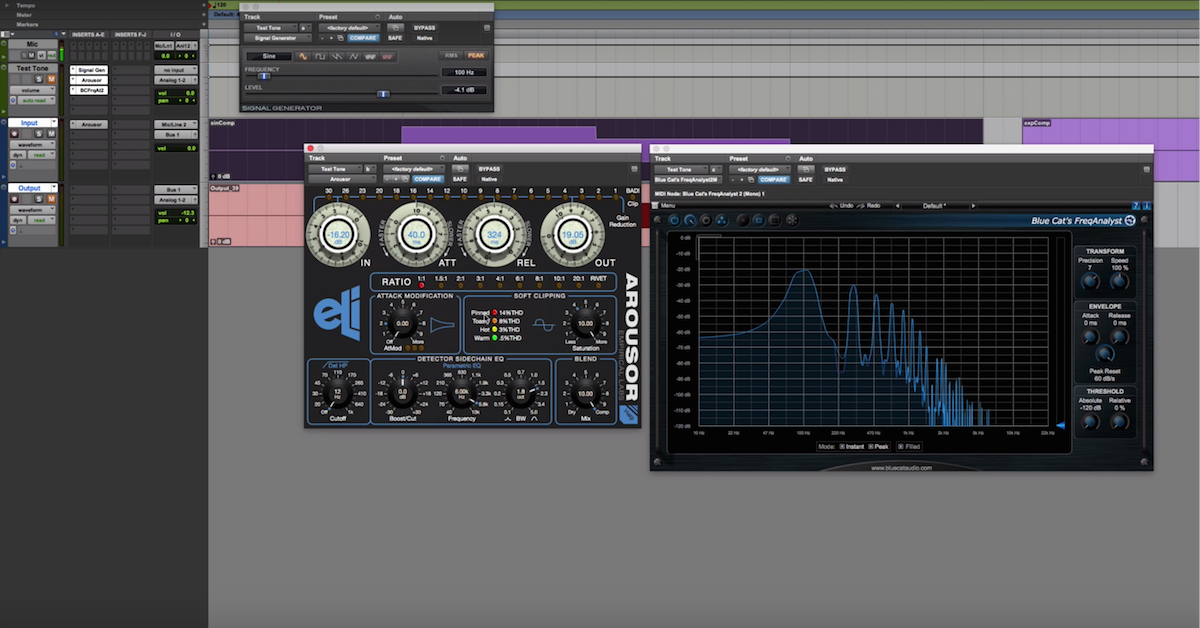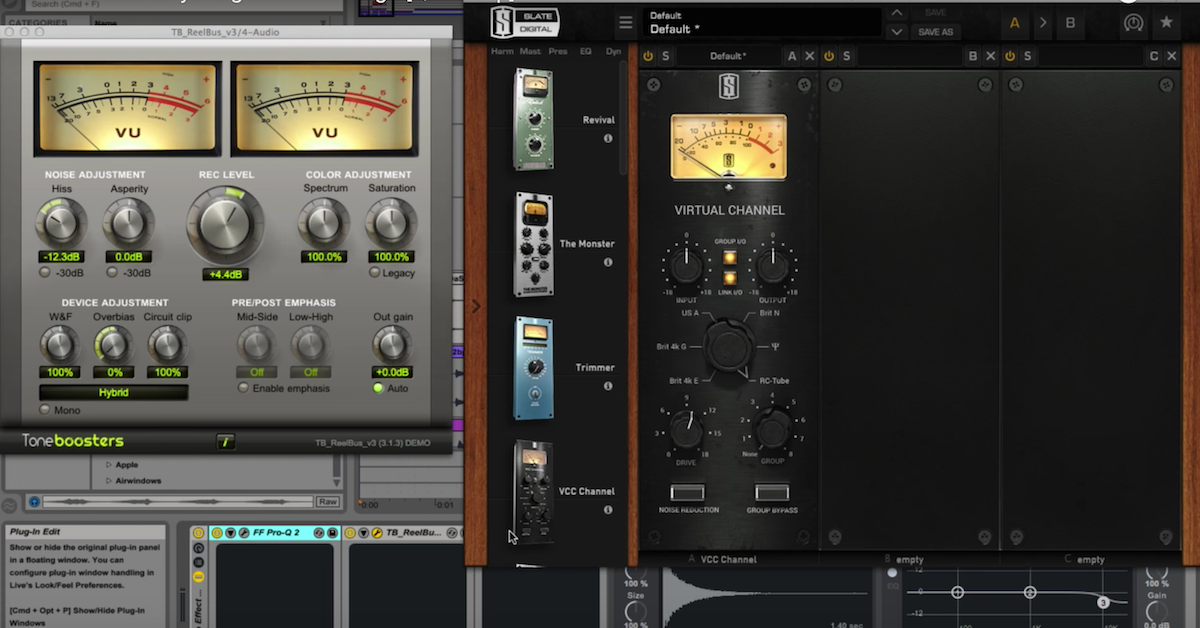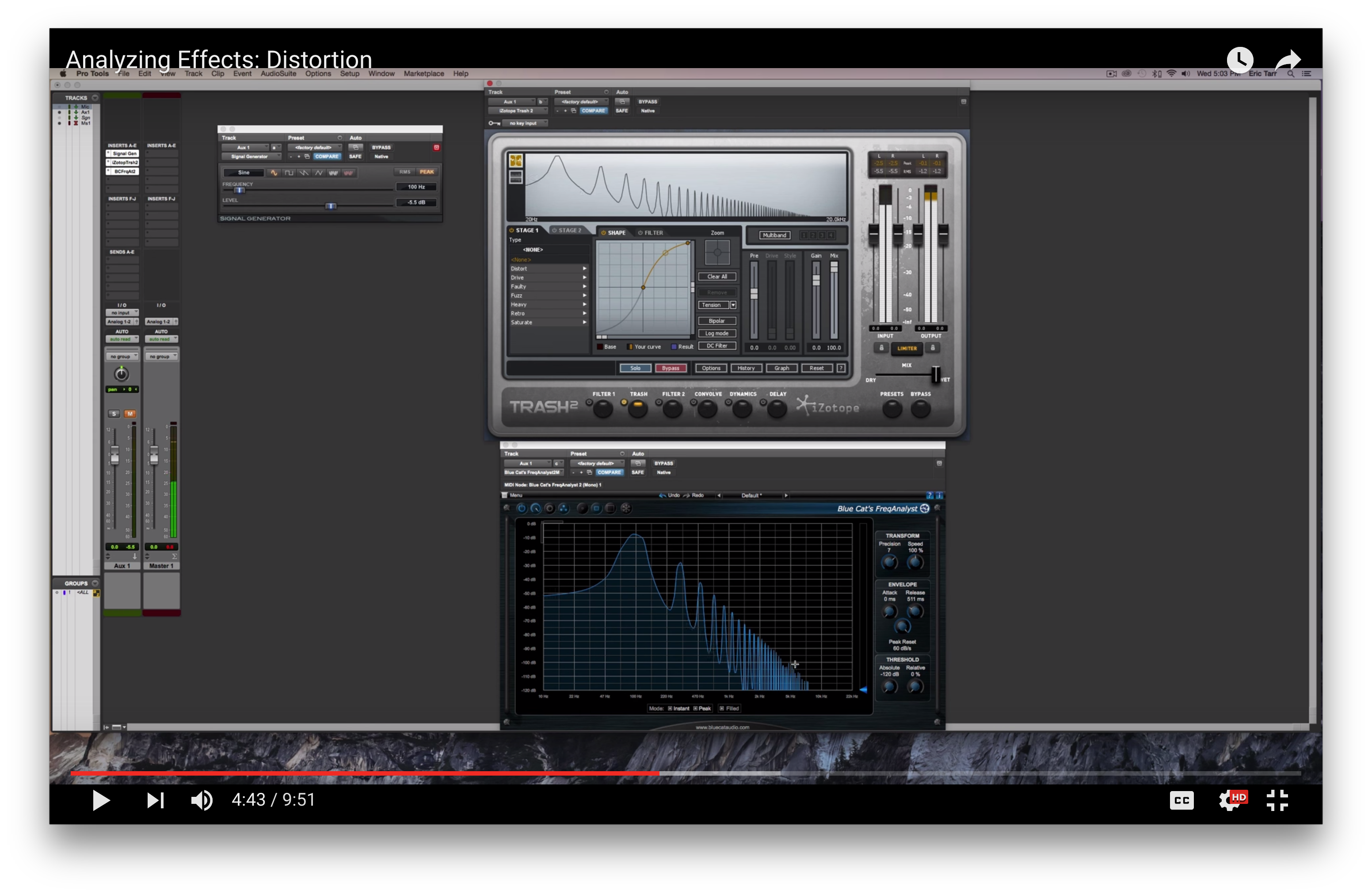How Clipping Became Today’s Sound
Article Content
Let me preface this article by saying I’m not opposed to the sound of clipping. In fact, I have a tutorial on how to clip a kick drum deliberately to make it hit harder. I use distortion in my mixes all the time. I even have a broken hardware compressor that I use specifically to clip things.
But I like clipping on my terms. I can do it in a way where I can get the bigness and the attitude without creating ugly harmonics or flattening the punch. Bad clipping makes things sound out of place, cheap, and weak. And yet, it is a ubiquitous sound in today’s modern music.
What is Clipping?
Sound is essentially amplitude over time.
In the acoustic world, we don’t really have any regulations on amplitude — things simply exert the pressure changes in the atmosphere that they exert, be it a mouse sneezing or a grenade going off.
However, in the mechanical world, the electrical world, and the digital world, we have limitations.
When those limitations are exceeded the amplitude of the sound can no longer exist in its original form — it transforms and creates energy where energy previously didn’t exist.
This is clipping.
Not All Clipping Is Equal!
We have two forms of clipping — hard and soft. And these can occur in the mechanical, electrical, and digital domains. All of these manifest a bit differently.
Mechanical hard clipping occurs when a system’s physical limitations are exceeded. This most commonly occurs in microphones and speakers. When these are receiving or creating sound, the diaphragm pushes and pulls with respect to the sound pressure level (SPL). However, the diaphragm can only stretch so far, and if the SPL exceeds how much the diaphragm can tolerate, it distorts.
Hard clipping also exists in the electrical stage. There are a number of ways this can occur, but it always involves some kind of gain staging system where the total voltage rating for a non-linear component is exceeded. Some non-linear components include diodes and transistors. Once the device hits its voltage limit, it clips not entirely unlike mechanical clipping.
In electronics, however, we can also have “soft” clipping. This occurs when a device starts to saturate as a signal approaches its limit, causing the amplitude to “bend” before it fully clips. A common device that does this is the push-pull amplifier frequently associated with tube gain stages, and the result of this distortion is a “warmer” or “rounder” sound than hard clipping.
Digital hard clipping is perhaps the most naturally aggressive form of clipping. In the digital domain, we have an absolute ceiling, meaning there’s no bending or softening of the level at all at the threshold of our maximum level.
All of these different places in which clipping occurs have accounted as to why it’s so integrated into today’s sound.
Deliberate Clipping
Clipping really began with electric guitars.
Electric guitars naturally produce a very clean sound. Distortion was originally only really introduced through broken equipment or people trying to gain their amps up too loudly, but it didn’t take long before musicians were experimenting with getting things to distort on purpose.
In the 1960s, manufacturers began making devices that would specifically introduce various degrees of hard and soft clipping, known as distortion pedals. And it didn’t take long before musicians started making this an integral part of their sound. Jimi Hendrix and The Rolling Stones were known for their use of distortion. While Rock had been around since the days of Chuck Berry, Rock, as we think of it, was really started by those aforementioned artists, and distortion was a distinguished part of that sound.
In the 70s, musicians started experimenting with all sorts of distortion. Many artists used overdrive, which hinges on soft clipping for its gritty but harmonically intact sound. Other artists like Hendrix and Black Sabbath used even edgier hard clipping-based effects, like fuzz pedals. The use of clipping in this way became a definitive sound of popular music, and in this way, we collectively embraced distortion as part of the music-making process.
Pushing the Envelope
Given a chance to experiment, we as musicians inevitably will. We always like to push the envelope and try to mess things up on purpose. Once distortion effects were present in the music-making market, we started putting it on everything — bass, drums, vocals — nothing was off-limits. Culturally, we have heard and accepted distortion in every which way for generations.
But in the 80s, we weren’t just pushing the figurative envelope. We were pushing the literal envelope of the sound. Once commercial radio and the recording industry had fully bloomed in the 60s and 70s, radio stations and record labels started getting competitive. People wanted their records to sound bigger than everyone else’s. In order to do this, record labels began instructing record engineers to print records louder.
There are two primary ways to do this. One is to compress the dynamics of the record very fast, a technique known as limiting; the other is to push the record into distortion. The limiting technique is designed to push levels up without incurring distortion, however, this can only be effective so far.
Eventually, something is going to give, and as record labels started demanding records continue to be louder and louder, subtly pushing the record into distortion along with limiting ultimately became better than just trying to do it all with a limiter (the lesser of two evils really). In this way, clipping was introduced to the sound of records. But it doesn’t really stop there.
Competitive Music Making
This idea of making one song sound bigger than another has also applied to the world of sample packs. By the early 2000s, Hip-Hop and subsequently EDM dominated the popular music markets. These genres rely heavily on programmed drums for their rhythm parts. And these drums were either from drum machines or samplers. Either way, pre-packaged drum samples became part of a musician’s arsenal in production.
A market for drum samples emerged in the mid-2000s, and the best sellers were the people who had the biggest sounding drums. This meant not only getting the best drum sounds but also making them sound as loud as possible. Sample pack producers began using similar techniques — dynamic compression and distortion — to do this.
I, myself, made a sample pack a few years back and part of what I used to make the sounds big was a dbx 160SL compressor. The limiter circuit on my dbx 160SL has a little quirk. The bypass doesn’t disengage the whole limiter, it just disengages the part that does the actual limiting, but the part that turns down the ceiling stays in-line.
In other words, the bypass button actually turns the limiter into a clipper. I used very subtle amounts of clipping from the dbx to push the signal a little louder. Many sample pack producers use similar techniques, although with different mechanisms and to different degrees.
So even before our records are clipping due to pushing them loudly, the samples being used in our records already have some clipping burned into the sound. And we have about fifteen years of music-making happening in this fashion.
Our Capabilities Have Changed
As our record-making equipment and techniques have evolved, we’ve grown capable of making records more pristine than ever before. But the sound of clipping has become so integrated into the culture and quality of recorded music, it almost doesn’t sound right when we aren’t distorting somewhere.
In truth, I don’t lament this. There are very few styles of music where pristine recordings make for effective results. Music is a reflection of culture and of emotion — and neither of those things exists without imperfections.
Distortion, like music itself, is a reflection of the human condition, which is beautifully flawed.





